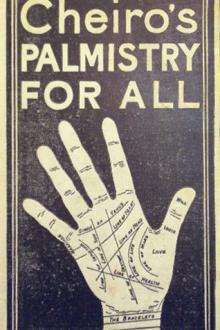The Diary - Samuel Pepys (red white and royal blue hardcover txt) 📗

- Author: Samuel Pepys
Book online «The Diary - Samuel Pepys (red white and royal blue hardcover txt) 📗». Author Samuel Pepys
Merry Andrew. ↩
See April 7th, 1668, ante. ↩
See June 8th, 1665, ante. ↩
Sophia Stuart, younger daughter of the Hon. Walter Stuart, third son of Walter, first Lord Blantyre, married to Henry Bulkeley, fourth son of Thomas, first Viscount Bulkeley, and Master of the Household to Charles II and James II (Collins’s Peerage, vol. viii, p. 16, ed. 1812, and Notes and Queries, Series 3, vol. i, p. 69). ↩
In Fleet Street. ↩
This is not the first learned horse of which we read. Shakespeare, Love’s Labour’s Lost, act i, sc. 2, mentions “the dancing horse,” and the commentators have added many particulars of Banks’s bay horse. ↩
Leviathan: Or the Matter, Forme and Power of a Commonwealth Ecclesiasticall and Civil, by Thomas Hobbes of Malmesbury, first published in 1651. It was reprinted in 1680, with its old date. Hobbes’s complete works, English and Latin, were published by Sir William Molesworth in sixteen volumes 8vo. between 1839 and 1845. ↩
See July 22nd, 1663. ↩
In Lord Orrery’s play. ↩
Francis Hosier, Muster-master at Gravesend. ↩
By Abraham Wright, Fellow of St. John’s Coll., Oxford, afterwards vicar of Oakham, who died in 1690. The title is, “Five Sermons, in Five several Styles, or Waies of Preaching. First, in Bp. Andrews his way; before the late King upon the first day of Lent. Second, in Bp. Hall’s way; before the clergie at the author’s own ordination in Christ Church, Oxford. Third, in Dr. Maine’s and Mr. Cartwright’t way; before the Universitie at St. Marie’s, Oxford. Fourth, in the Presbyterian way; before the Citie, at St. Paul’s, London. Fifth, in the Independent way; never preached. With an Epistle rendering an account of the author’s designe in printing these his sermons, as also of the sermons themselves. … Printed for Edward Archer, 1656.” Wood says:
“The chief end in printing these sermons, was, first, to show the difference between the University and City breeding up of preachers, and to let the people know that any one that hath been bred a scholar is able to preach any way to the capacity and content of an auditory. And, secondly, that none can do this, but they only that have had such education: yet, notwithstanding, ordinary capacities are more taken with cloak and laymen’s preaching than that of the gown.”
↩
See from August 21st to 27th, 1668, ante. ↩
See December 11th, 1667, ante. ↩
At the Exchequer, of which he was auditor. ↩
“The Bear at the Bridge foot,” at the Southwark end of old London Bridge, on the west side of High Street; pulled down, December, 1761, when the houses on the bridge were removed and the bridge widened. ↩
Lord Brouncker’s answer and Sir William Penn’s, both dated September 11th, and Sir John Mennes’s, dated September 13th, are contained in the MS. in the Pepysian Library previously referred to (No. 2242). Pepys’s own answer is dated September 13th. ↩
William Ashburnham. ↩
No play called The Ladys à la Mode has been traced in 1668, or in any earlier or later year. A comedy, entitled Love à la Mode, was brought out very soon after the Restoration, but it was anonymous. The preface is signed T. S., initials which are believed to stand for T. Southland. A comedy, named Damoyselles à la Mode, and printed in 1667, 8vo., is mentioned by Langbaine, p. 56, as written by Richard Flecknoe, and dedicated to the Duchess of Newcastle; but it does not appear to have ever been acted, though, in point of title and date, it comes very near what is wanted. ↩
Probably William Beeston, who had been governor of the Cockpit Theatre. ↩
The Stocks Market took its name from a pair of stocks placed near this spot. See December 10th, 1660, ante. About 1675 Sir Robert Viner purchased an equestrian statue of John Sobieski trampling down the Turk; which, when it had undergone some necessary alterations, he erected in Stocks Market as Charles II trampling on Oliver Cromwell. The Mansion House now stands on the site. About 1737 the statue was presented to Robert Viner, the lineal representative of the convivial Lord Mayor, and the market transferred to the space gained by the covering over the Fleet Ditch. This Fleet Market has, in its turn, given place to Farringdon Street. —B. ↩
See note 4204. ↩
By John Fletcher. ↩
And that he might tell Mrs. Pepys. —





Comments (0)